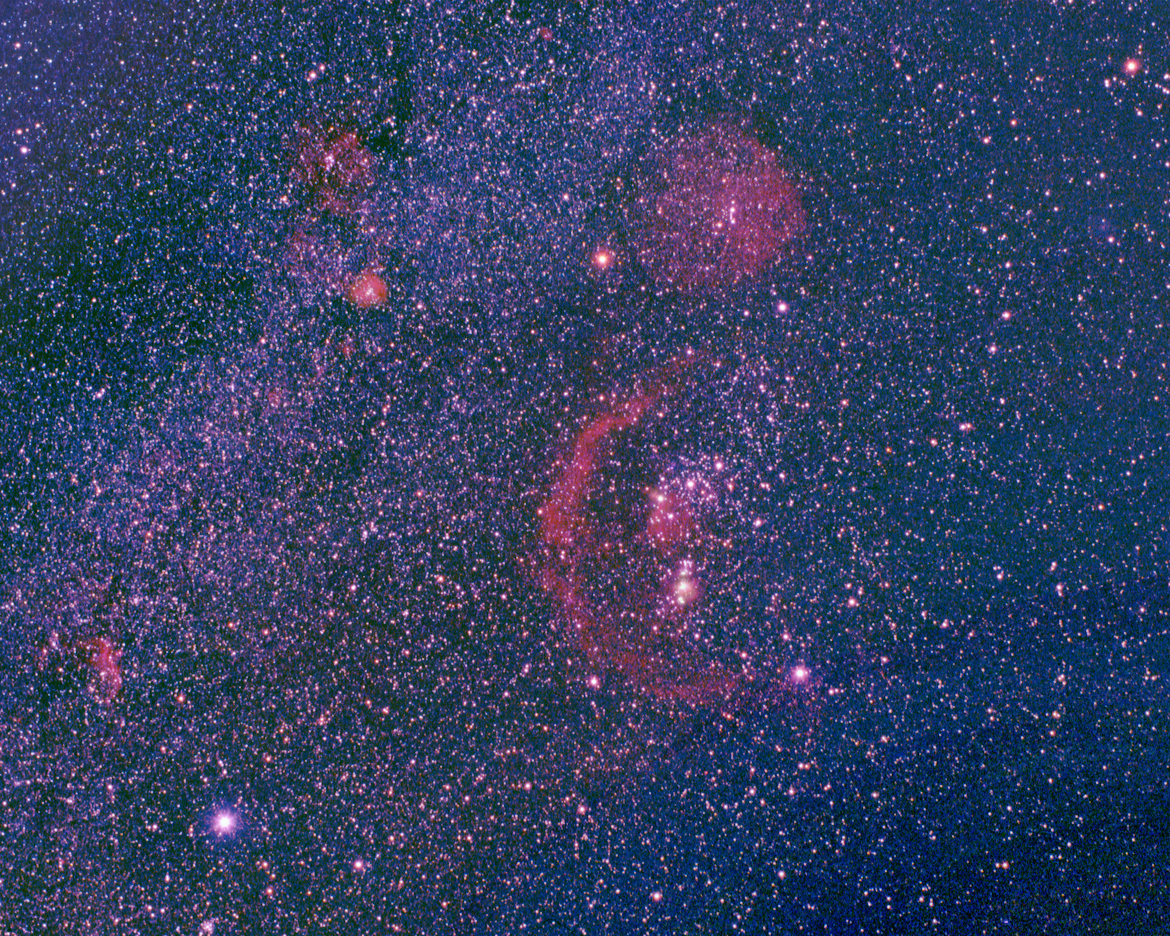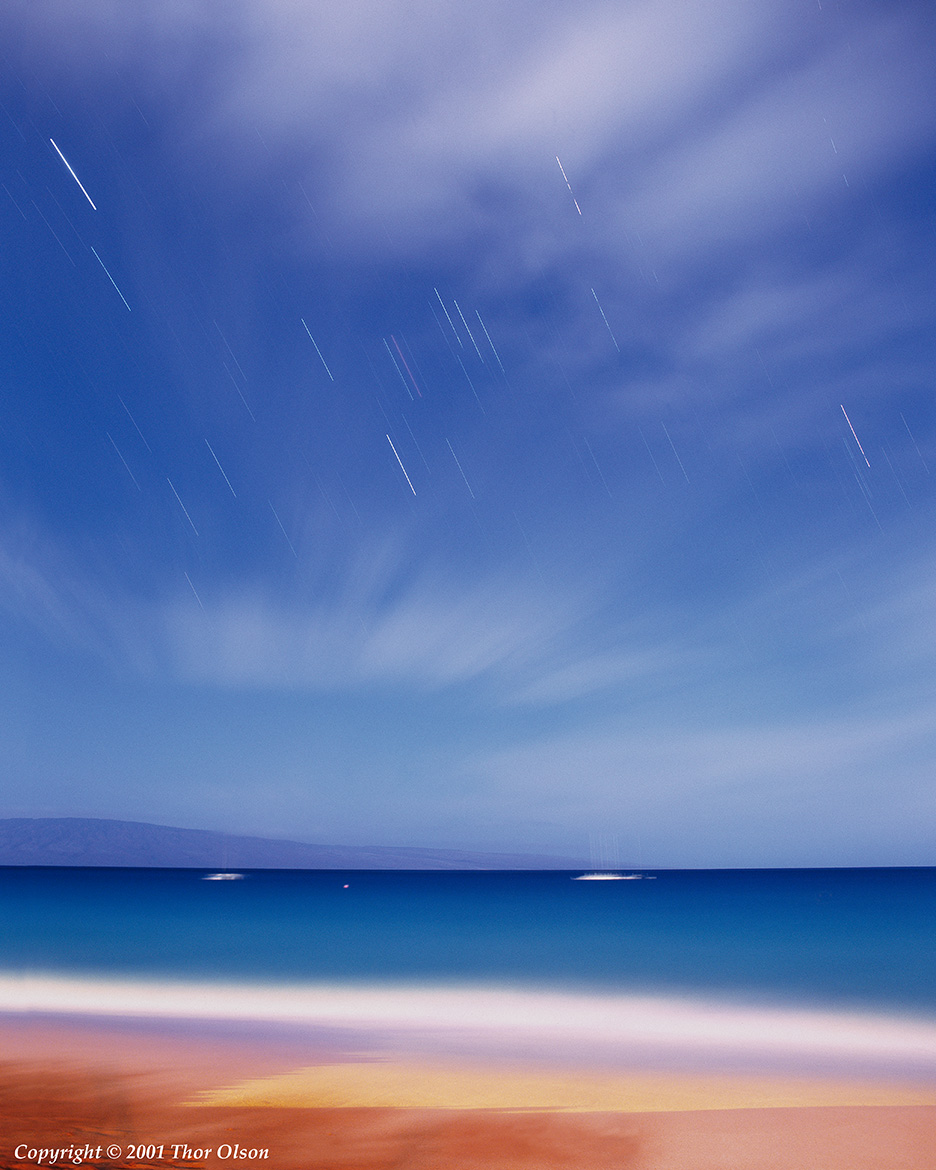
The constellation Orion is a distinctive pattern in the winter sky. Look for the three-star belt, with another three-star sword hanging from it. Here he is with some of his less visible friends. The large red arc is Barnard’s Loop, which encircles the Orion Nebula (lower of the two red areas) and the Horsehead and Flame Nebulas.
Betelgeuse is the red giant star at Orions shoulder, not to be confused with the circular red Rosette Nebula to the left. The bright blue star at the lower left is Sirius (the Dog Star), the brightest star in the sky, and sailing above it in the blue river of the winter Milky Way is the red wisp of the Seagull Nebula.
Lake Superior shoreline near Two Harbors, MN
March 2004
Pentax 6×7, 55mm, f/5.6
E200 +2 stops, 20 minutes, guided
If you are interested in my occasional contributions to Thor’s Life-Notes, I invite you to follow along.

